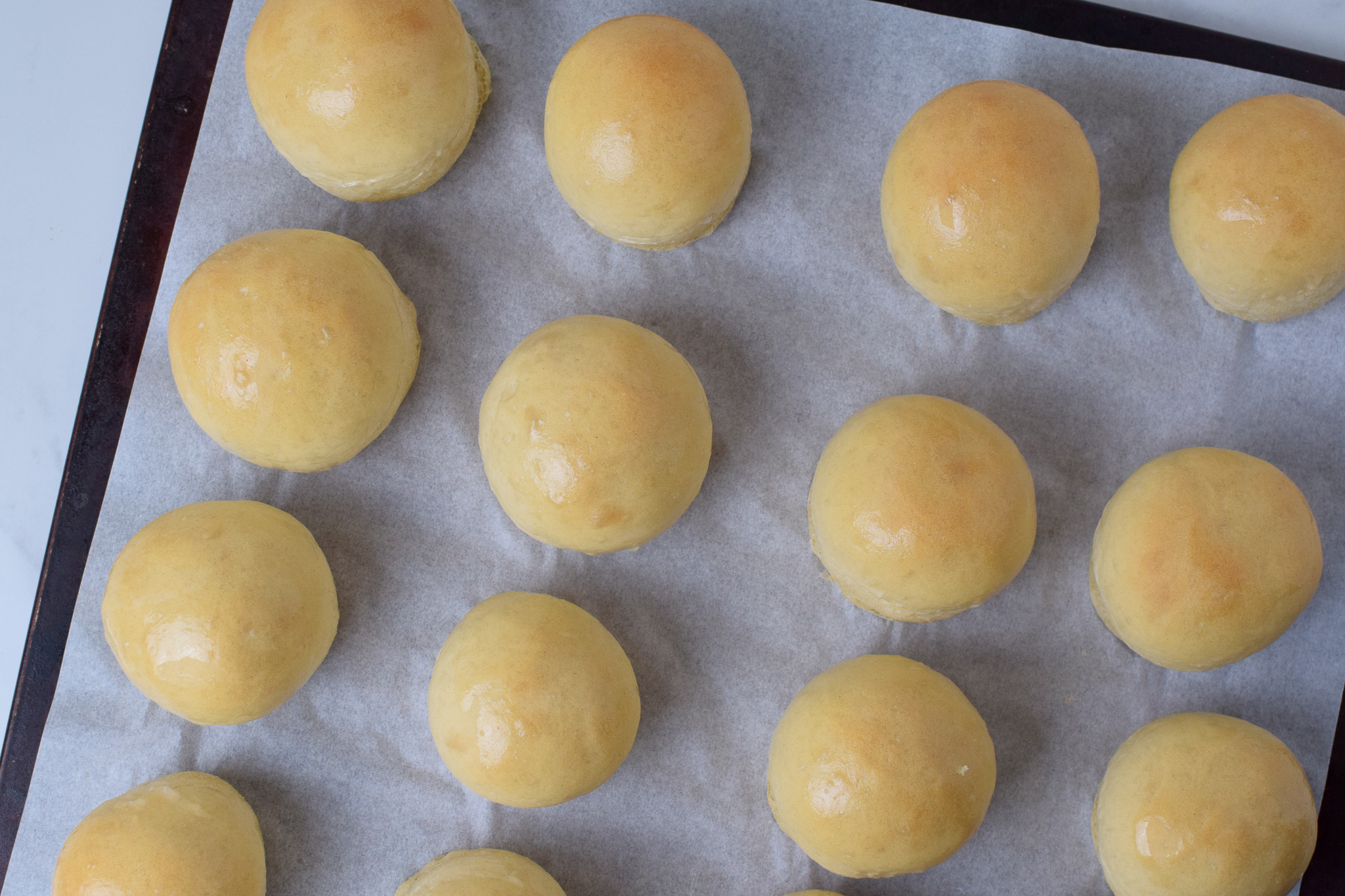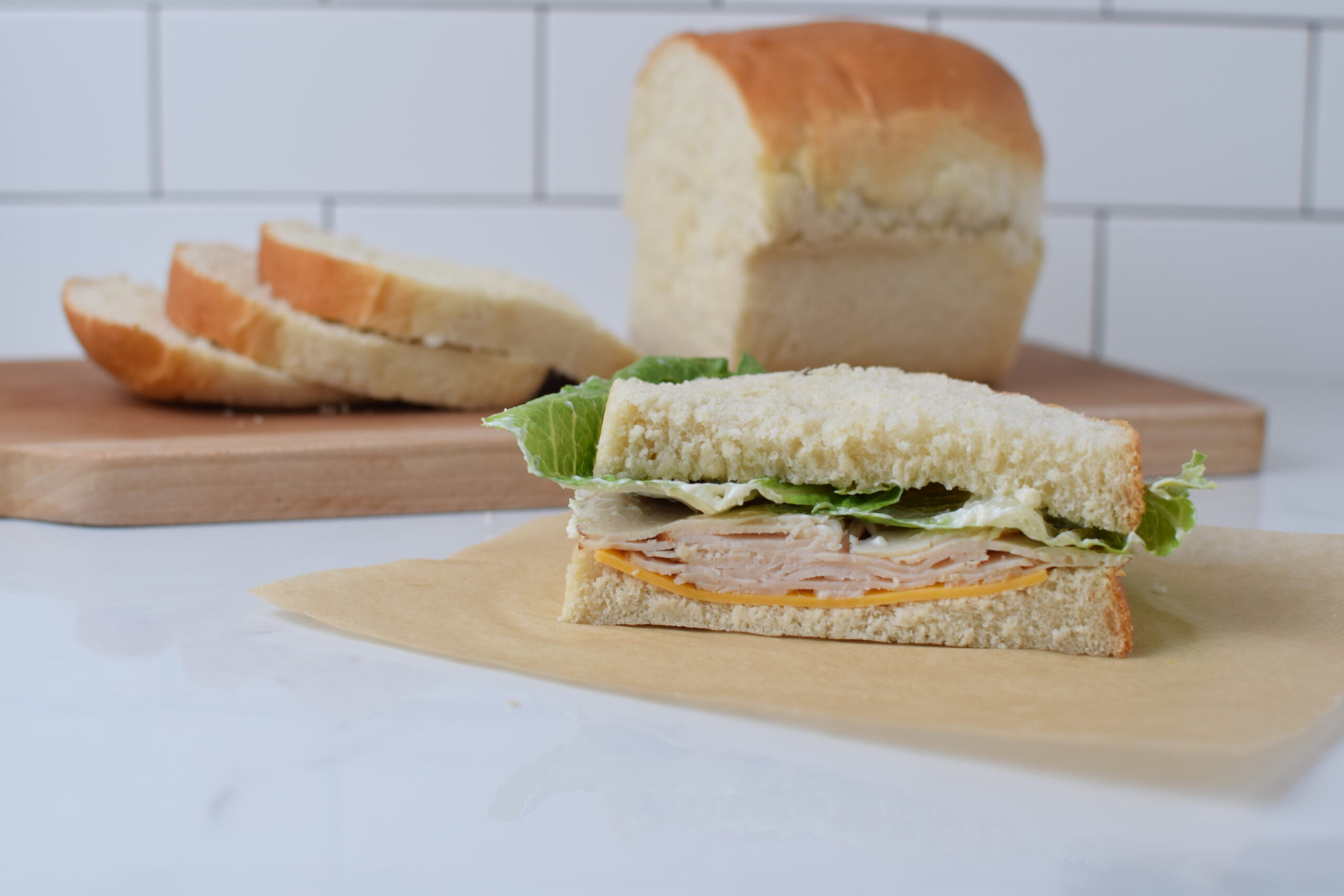What is Sourdough Starter?
Sourdough bread and sourdough starter can seem very complicated and dare I say overwhelming. But that doesn’t have to be the case. If you’ve been left feeling like WTF?, I’m here to simplify it and help.
First off, there is a lot of information out there about the science and health benefits. I’ll let you do your research if you choose to. I’m sticking with the basics because at the heart of it, that’s what you need to know.
What is Sourdough Starter?
Sourdough starter makes your bread rise. It is made from roughly equal parts flour and water. You can make your own in a few weeks. It only takes about 2 minutes each day. And I’ll walk you through how to make it yourself.
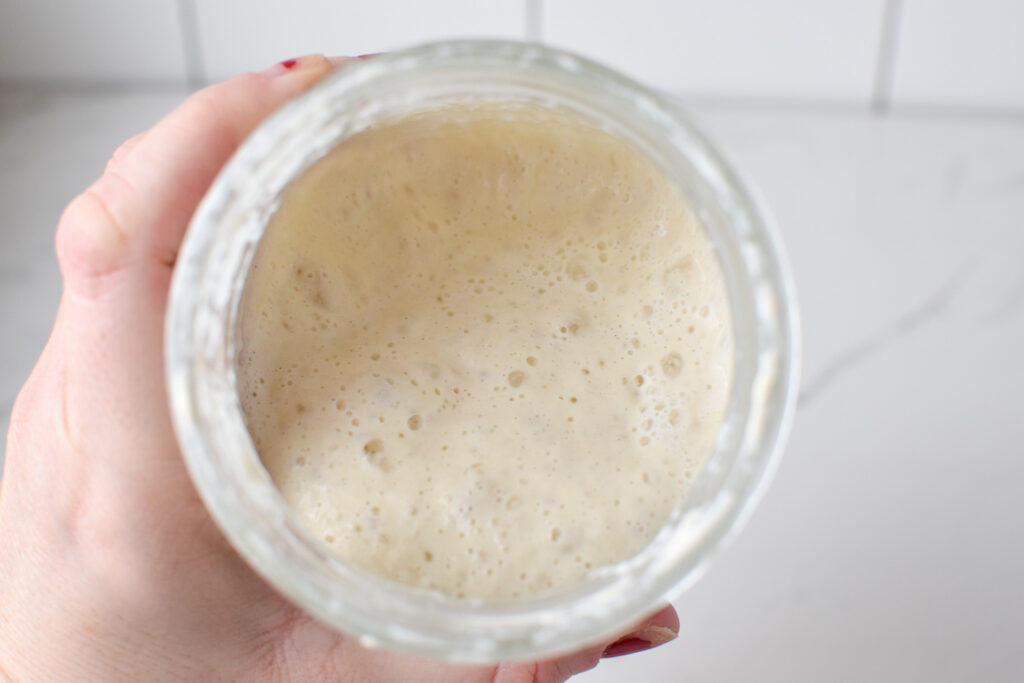
Once you have your sourdough starter, you can keep it going forever and bake with it for generations. You feed it, bake with a portion of it, feed it, use a portion, and on and on it goes.
In order for sourdough bread to rise, your starter has to active. We make our originating starter active by adding (aka feeding) equal parts flour and water. We allow that to rise over the course of about 3-12 hours. When it has peaked, meaning it has doubled in size, or possibly tripled, it is ready be used in your sourdough bread recipe. When it rises, it will make your bread rise.
How to Make Sourdough Starter
Creating an active sourdough starter that’s ready to bake with can take a few weeks. My starter took about 3 weeks before it was doubling in size and bubbly. While some say it can take 7 days, you really have to watch your starter. It may take longer. And that’s okay!
The basics of starter are adding equal parts flour and water. Then, you’ll throw out half, and add back in equal parts flour and water. After about 2 weeks (could be longer or shorter), you should have an active starter.
Ingredients to Make Sourdough Starter
You will need the following to make your own starter: Whole Wheat Flour, All Purpose Flour, and Room Temperature Water
Whole wheat flour helps the starter get going a little earlier. If you only have all purpose flour, use it.
If you have chlorinated water like me, you may want to fill up a pitcher/bottle of water and let it sit for 24 hours. This will help the chlorine dissipate. I keep a gallon of water (under my sink) and use it to feed my starter and water my hydroponic plants…neither love chlorine. When the jug is empty, I fill it back up with tap water, and the next day it’s chlorine free.
Tools to Make Sourdough Starter:
Digital Kitchen Scale: If you plan to bake sourdough bread, I highly recommend using a digital kitchen scale. They are cheap and easy to use. Not to mention it makes everything in the baking world easier. I resisted for years. Don’t resist! Just get one.
Glass jar or bowl: There are lots of sourdough kits that include jars with measurement lines and lids. You can get those, but it isn’t necessary. I use a glass jar meant to hold sugar. When it’s dirty, I switch over to a 32 oz Mason jar, and then switch back to my big sugar jar when it’s clean. I already owned both so didn’t have to spend money.
Making Sourdough Starter
Day 1
Combine 100 grams of whole wheat flour with 100 grams of water in a glass jar or bowl, and stir. Cover loosely with a napkin, coffee filter, tea towel, or a loose lid. You want starter to have access to air without letting anything fall, crawl, or fly into it.
32 oz. wide mouth mason jars work well for this.
Leave your starter on your counter, on top of your fridge, or in some warm spot if your kitchen is cold. In my cool kitchen, I kept my starter on a small cutting board (granite is cold) between my coffee pot and refrigerator. If your kitchen is cold, get creative. You aren’t trying to warm it, but you do want to keep it above 68 degrees.
Day 2
You currently have 200 grams in your jar. Throw out (discard) half, which leaves 100 grams in the jar.

Now add in 100 grams of all purpose flour, and 100 grams of water. Stir and loosely cover.


Day 3
You may see some action today, you may not. I saw my first activity around day 7. If your house is warm, you’ll likely see activity earlier. Activity will look like little bubbles and/or a fresh scent.
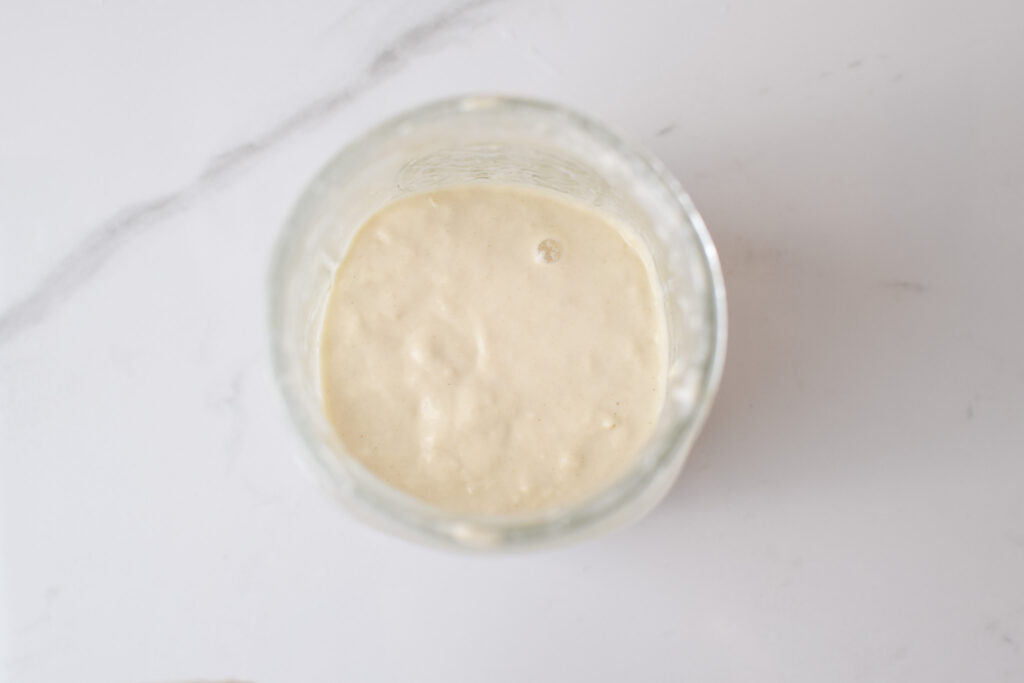
You will start to feed your starter twice a day now, spaced as close to 12 hours apart…7 am and 7 pm, or something like that.
In the morning, take 100 grams of your starter and discard the remaining starter. Add to it 100 grams of all purpose flour and 100 grams of water, stir, and loosely cover.
In the p.m., do the exact same thing. Measure 100 grams of your starter to keep, and throw out the rest. Add 100 grams of all purpose flour and 100 grams of water, stir, and loosely cover.
You don’t have to throw your discard in the trash at this point. You still need to remove it from the 100 grams of starter you are keeping, but instead, you can make recipes that are titled “discard” recipes.
I have a great whole wheat sandwich bread with sourdough discard recipe. My kids love it. This is a great way to use up the leftover discard so it doesn’t go to waste. You’re going to collect a lot at this point as we feeding two times a day now.
Day 4
In the morning, measure 100 grams of your starter to keep, and discard the rest. Add 100 grams of all purpose flour and 100 grams of water, stir, and loosely cover.
In the p.m., do the exact same thing. Measure 100 grams of your starter to keep, and throw out the rest. Add 100 grams of all purpose flour and 100 grams of water, stir, and loosely cover.
Day 5
Repeat again…
In the morning, measure 100 grams of your starter to keep, and discard the rest. Add 100 grams of all purpose flour and 100 grams of water, stir, and loosely cover.
In the p.m., do the exact same thing. Measure 100 grams of your starter to keep, and throw out the rest. Add 100 grams of all purpose flour and 100 grams of water, stir, and loosely cover.
Day 6 and Day 7
Start watching for action. Has it risen or doubled? Do you have lots of bubbles? Does it look active and have bubbles popping at the surface?
If your starter has doubled in size, measure 100 grams of your starter to keep, and discard the rest. Add 100 grams of all purpose flour and 100 grams of water, stir, and loosely cover.


Wait for it double again, and then put the lid and place your starter in the fridge until you’re ready to bake.
If your starter isn’t doing a whole of anything, that’s okay. You just keep going…
In the morning, measure 100 grams of your starter to keep, and discard the rest. Add 100 grams of all purpose flour and 100 grams of water, stir, and loosely cover.
In the p.m., do the exact same thing. Measure 100 grams of your starter to keep, and throw out the rest. Add 100 grams of all purpose flour and 100 grams of water, stir, and loosely cover.
How Long Should it Take?
Your new starter can take 7 – 21 days to be active and bubbly. You will continue the process above until the starter doubles in size before the next feeding.
You can use a rubber band to mark where your starter is in the jar when it’s fed, and then watch how it rises and how long it takes. Frequently it takes more than 7 days, and that’s okay.
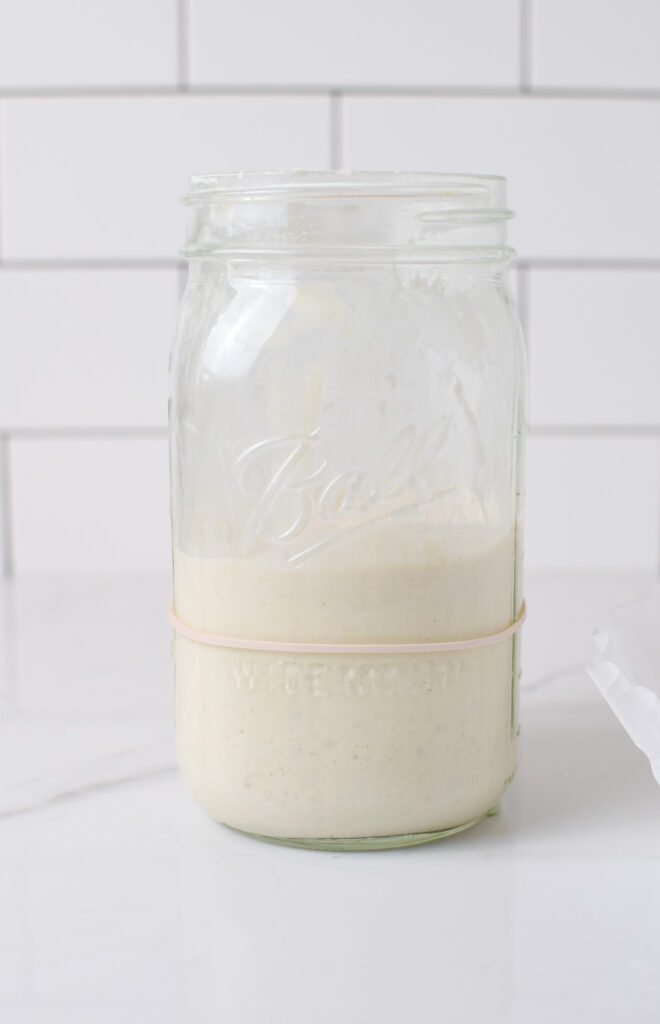
What Should I Do When the Starter Doubles in Size?
When your starter doubles in size within a 12 hour feeding window, hooray, you have sourdough starter!
Feed it one more time – – measure out 100 grams, feed 100 grams of flour and 100 grams of water, stir, and loosely cover. Watch for it double again, and then put it in the refrigerator.
How Do I Bake with my Sourdough Starter?
When it’s time for you to bake, you’ll need to do some planning ahead. In order to use starter in a sourdough recipe, it needs to be active and bubbly. As such, you’ll need to feed your starter just like you did above. When it’s doubled in size about 3-12 hours later, you’re ready to bake!
I highly recommend How To Make Sourdough Bread post for your first batch of sourdough bread. The recipe is detailed in every step so you know exactly what to do.
How Do I Store and Maintain my Sourdough Starter?
I keep my starter in the refrigerator and feed it each time I want to bake with it, or once a week at the latest.
Starter stored in the fridge will need to be fed (that’s the process from above of discarding all but 100 grams and adding 100 grams of flour and 100 grams of water) once a week.
Starter stored on the counter will need to be fed twice a day.
I recommend storing starter in your refrigerator. I use my starter 2 or 3 times a week. As such, I’ll usually feed the starter around breakfast, and by the evening, it has doubled and is ready to make sourdough bread, or something else delicious.
I recently taught my mom and sister how to make sourdough bread. I gave them a portion of my own starter so they could build their own without making it from scratch.
My sister kept her starter on the counter and was making bread, muffins, and all kinds of tasty treats. Life happened and she didn’t bake for 3 days. She forgot about it and didn’t feed the starter, either, for those 3 days. Her starter grew mold and died.
My mom, on the other hand, makes 1 loaf of bread a week. She pulls her starter out Friday morning, feeds it, and by Friday night she starts her sourdough bread. Every Sunday she and my Dad eat sourdough bread with their dinner. She bakes less but knows her schedule and her starter is alive and kicking in the fridge.
The key is to know yourself. I bake 3 times a week but only want to touch my starter when I’m using it, so the fridge is the safest place for me.
What Can I Do with the Leftover Sourdough Discard if I Don’t Pitch it?
As I said up above, you don’t have to put your starter discard in the trash. You can bake recipes titled “discard”, or if you’re like me, you just bake a lot.
When I feed my starter in the morning, I usually have between 100 and 200 grams in the jar. I don’t discard any of it. Let’s say I have 200 grams in the jar. We know we have to feed equal parts water and flour. So, I will feed my starter 200 grams of flour and 200 grams of water, stir, and loosely cover. By that evening, it will have doubled and I will have 600 grams of active starter. What do I do with 600 grams of active, bubbly, starter?
I bake 2 loaves of my sourdough bread, a double batch of sourdough bagels (freeze half) and a batch of sandwich rolls. Or, instead of bagels, I’ll put the remaining 300 grams of starter back in the refrigerator and the next morning I’ll make sourdough pumpkin pancakes.
The remainder (I always try to leave around 100 grams in my jar) will go back into the fridge until it needs to be fed in about a week, or until I want to bake again. When I’m ready to bake, I’ll feed it again and the process continues.
I have never gone a week without using my starter. Because really, if you’re trying to cut back on groceries and overly processed foods, your family is probably eating more than 1 loaf of bread a week. I know we do!
Can I Buy Sourdough Starter?
Yes you can! People sell dehydrated starter as well as starter in a jar. You can buy it from King Arthur Baking Company here.
The best way, in my opinion, is to get some from a friend. But if you can’t, you can make it yourself, like I did. And it works!
I’d love to know if you are considering making your own starter! Tag me on Instagram, or let me know in the comments, if you give it go!
If you’re interested in sustainable living from your very own kitchen and backyard, let’s be friends! I hope you’ll stop by again!

